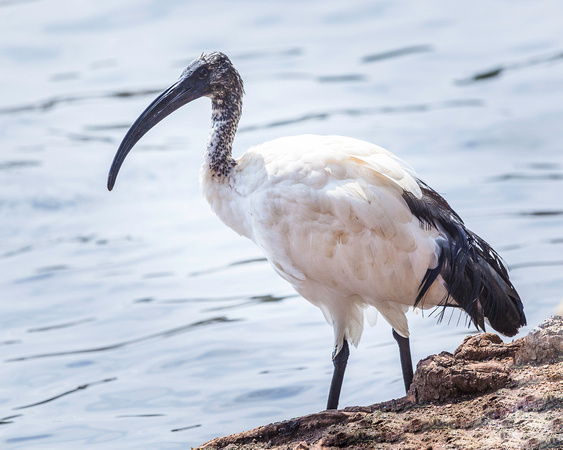Sacred Ibis (Threskiornis aethiopicus)
Sacred Ibis (Threskiornis aethiopicus) - 35 inches long
Widely distributed over Africa, eastwards to Western Asia.
A wading bird of the ibis family, Threskiornithidae, the sacred ibis breeds in Sub-Saharan Africa, southeastern Iraq, and formerly in Egypt, where it was venerated and often mummified as a symbol of the god Thoth. The African sacred ibis occurs in marshy wetlands and mud flats, both inland and on the coast. It will also visit cultivation and rubbish dumps.
It feeds on various fish, frogs, small mammals, reptiles and smaller birds as well as insects (crickets, grasshoppers, water beetles) and molluscs. It may also probe into the soil with its long bill for invertebrates such as earthworms.
Recorded migrating 900 hundred miles (e.g. from South Africa to Zambia).
Nest of sticks or reeds. Colonial and will nest with other species.
Photographed at Emmarentia Dam, Johannesburg, South Africa.


